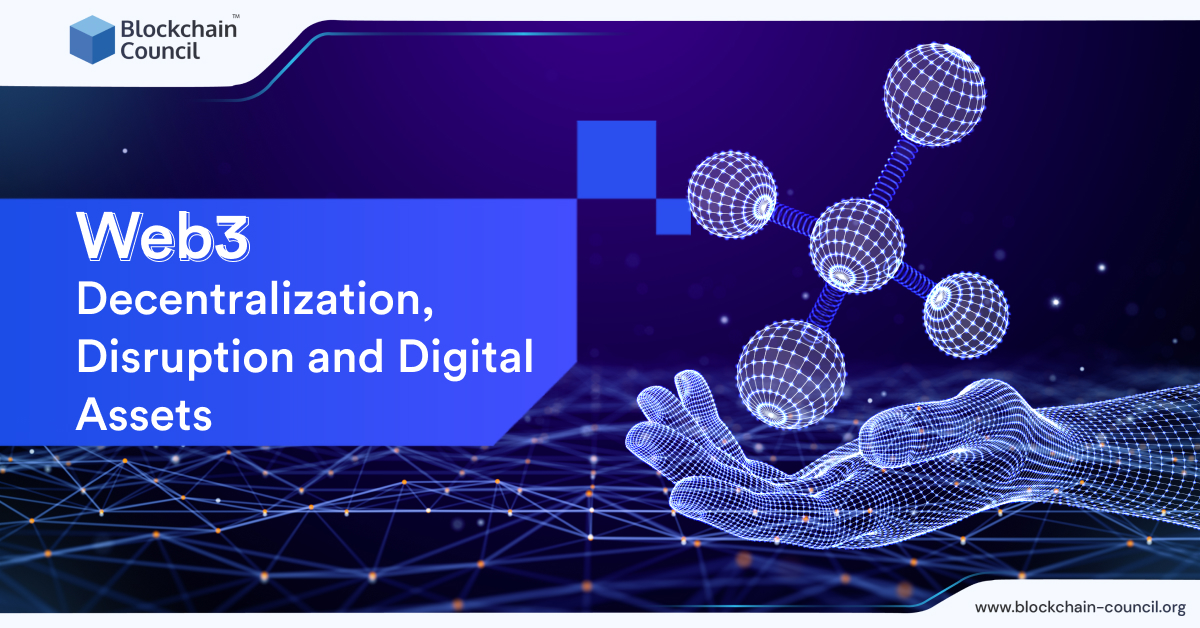
- Pradeep Aswal
- September 17, 2024
Table of Contents
Introduction
For all that Web3 promises, decentralization has evolved into a rallying cry and even a catalyst. But what exactly is Web3, and how is it important beyond being a media term or a mantra for ‘technical devotees’? How can decentralized systems and design philosophies serve as an equalization and a disruptor for the internet’s future? And what role does the advent of the Metaverse play for digital assets or decentralized finance (DeFi)? We will examine how these components affect the challenges and opportunities for the financial services sector throughout this article on the Metaverse and how Web3 development will become mainstream in the financial services sector.
Web3: The Dawn of Decentralized Ecosystems
Web3 is a technology or a concept for creating an internet that empowers individuals and communities with a scope of decentralized organizations. Its base is built on the idea of decentralized infrastructure, design, storage, and access, and therefore is heavily anchored in Blockchain technology and IPFS (InterPlanetary File System). Web3 prioritizes users by empowering them with control over their data and digital assets. It is designed to be more user-centric, as opposed to being controlled by corporations or other centralized entities. Web3 allows users to own and control their online identity and personal data, making the web more secure and privacy-focused. In Web3, users are in charge and can make decisions that impact their digital lives rather than having their experiences shaped by outside entities. This user-first approach sets Web3 apart and positions it as a key player in the future of the web.
What does the Future of Web3 behold?
- By 2026, it’s expected that 25% of individuals will spend a minimum of one hour each day in the Metaverse, based on a survey report by Gartner Group. Additionally, they anticipate that about 30% of businesses will launch goods and services for the Metaverse.
- The gradual implementation of key Web3 technologies like Metaverse will increase the demand for Web3 experts and professionals in the industry as more businesses start to incline towards adopting Web3 technologies in various business processes, from advertising and marketing to user experience.
- The formation, storage, or exchange of value in the Metaverse would be powered by Web3, which is essential for enabling this new kind of commerce.
Evolution of Web
The Internet evolved into one of the most crucial productivity tools of the modern era in the 1990s. Like an online encyclopedia, the content was initially uploaded, cataloged, and made available solely for readers.
This early version of the internet, which we now refer to as Web1, was limited by its single-direction resource design. Users accessed content created and offered by providers, and there were few options for monetization. Advertisers flocked to this new platform to boost the content provided by established media giants.
The internet gradually started to develop into its subsequent form, Web2. Platform providers replaced purely content or searched providers. Most internet access points are now “free” services, including social connectivity, messaging, productivity tools, and other content production tools. Platforms powered by artificial intelligence with integrated functionality or a spectacular, albeit 2D, user experience also developed into e-commerce hubs.
Decentralization with Blockchain
Blockchain promoted the concept of rebuilding the financial system in a decentralized manner, using visions of Web3 as their guide. Developed on top of what came before, Web3 aims to decentralize control over the transactions, including governance which will make up the experiences within the Metaverse. It is “philosophically inconvenient” to now have a Metaverse that is only founded on a centralized internet in which one can certainly have a digital asset (such as digital art, land, or even art) free as well as clear because we within real world; the platform provider presently may close down the server as well as forbid the user from the platform. A decentralized internet is not necessary for the Metaverse to occur.
What is Decentralization?
Decentralization is the absence of centralized control, whether that control relates to how individuals interact with one another, consume content, or conduct business. For Web3, true decentralization would entail constructing essential infrastructure components, such as storage, in a robust global network that would prevent any one person or organization from blocking and otherwise restricting access. This is a fundamental tenet of public Blockchain infrastructure or a key Web3 design concept. The emerging infrastructure of Web3 technologies is a primary reason why there is a need to invest and focus on Web3 training for almost all business domains. The incoming Web3 transformation, especially in the financial services sector, has developed a void for Web3 experts with business proficiency in Web3 technologies like Blockchain.
Community Centric Financial Ecosystem in Metaverse
Digital assets provide the basis of a decentralized financial system. In some ways, the trading of new assets, such as cryptocurrencies or NFT, has derived from the core value of Web3. However, the fundamental building block of how value can be produced and transferred in the Metaverse is represented by digital assets. Blockchain allows digital assets to be developed and tokenized value for developers and the projects they support. This can take the shape of a cryptocurrency, a utility token for use in Blockchain transactions, stablecoins linked to a value of a national currency, or even a non-fungible token (NFT) that represents digital goods and real benefits like membership in a group.
The fungibility of these assets is a fundamental difference. Are these unique as NFTs, or can they be exchanged in kind for similar tokens (cryptocurrencies)?
These digital assets display their value depending upon the Blockchain’s market economics or the asset’s potential value by a larger market. A single central authority does not issue such assets or try to regulate their supply or price. Assets can also be freely & immediately transferred peer-to-peer in a Web3-powered Metaverse without any need for an intermediary.
Decentralized Finance
Web3 developers are working to reinvent the financial system using a new model through an effort to adapt this decentralized strategy to the larger economy. Decentralized finance, and DeFi, are used to undermine the current approach.
We must briefly discuss smart contracts to comprehend DeFi as a whole. On a Blockchain network, smart contracts codify shared business logic that operates independently and only requires a transaction to carry out functionality. Blockchain developers can define if-then transactions by encoding “trust” into Blockchain thanks to the automation provided by smart contracts. A smart contract automatically adds the new owner to the Blockchain when you carry out a sales agreement for your house.
With the advent of Ethereum, smart contracts were first made possible, enabling common depictions of value as tokenized assets, whether fungible equities, including stablecoins or certain assets such as NFTs.
If you are looking for complete decentralized finance learning, Blockchain Council offers a complete package of concepts from basics to advanced in a single certification. You will also get a certification after the successful completion of this certification to enhance the credibility of your skills and knowledge.
What role does this play in the Metaverse?
The Metaverse is the use of immersive technologies to boost online experiences. Due to virtual, augmented, or extended reality innovations, there is now the opportunity to connect with businesses and people in ways that are significantly more appealing than those possible with two-dimensional visuals. However, Web3 technology may be linked to or speed up the process of realizing the full potential of the Metaverse as envisioned by Metaverse visionaries.
Decentraland and The Sandbox produce rich and varied experiences because they are user-driven, even though they do not yet have a central power to regulate or censor. In the future, a mesh of Blockchain networks propelled by smart contracts will allow for the smooth transfer of digital assets between Metaverses.
Ultimately, Web3’s ability to support user-driven economies with much less friction instead of a curated, centralized experience under middlemen’s control could be the Metaverse’s real value.
Disruption of Conventional Technical Infrastructure
Web3-driven decentralization of resources and services will significantly change how finance operates. There is a chance for disruption as well as a chance for leadership. For instance, decentralized exchanges involving digital assets allow for direct transfers between asset owners. It could use the Blockchain to authenticate ownership or transfer it immediately, doing away with the requirement for traditional clearance and brokers.
These exchanges depend on liquidity pools financed by separate owners of digital assets and pay them fees directly for deal facilitation. The efficiency of a smart-code-powered transaction or even a shared fee structure is incomparable to that of traditional exchanges.
Lending, payment infrastructure, asset exchanges, insurance, or custody services enabled by Web3 are already available in cutting-edge and crypto-native financial services companies. As users make even more transactions in these settings, adopting the Metaverse would only speed up these tendencies.
You can learn more about the advanced concepts of Web3 technologies and development with dedicated Web3 training, where experts will help you understand how these innovative technologies will disrupt the entire market.
Wrapping Up
There is a firm belief that Web3 is a fully operational and distinguishing feature. Web3 clarifies that the financial services sector is at a turning point. Our avatars will purchase digital content & amass money using digital assets in this new digital world. Using assets encoded in smart contracts, we will extend and receive credit. Institutions would engage customers and staff in unusual ways. A new generation of decentralized financial infrastructure will support the Metaverse’s and Web3’s rails of secure commerce. Web3 technologies, including decentralized platforms and virtual reality, are set to revolutionize virtual human presence shortly. With Web3, individuals will have greater control over their online identity and presence, enabling them to create and engage with virtual communities in a secure and decentralized manner. Web3-powered virtual experiences will provide a more immersive and interactive experience, leading to a new era of virtual human presence. The combination of decentralized technologies and virtual reality will transform how people interact and connect in the digital world.

































































![Why Your Business Must Be Web3 Ready [Top Benefits & Use Cases]](https://www.blockchain-council.org/wp-content/uploads/2022/09/Why-Your-Business-Must-Be-Web3-Ready-Top-Benefits-Use-Cases-01.jpg)



 Guides
Guides News
News Blockchain
Blockchain Cryptocurrency
& Digital Assets
Cryptocurrency
& Digital Assets Web3
Web3 Metaverse & NFTs
Metaverse & NFTs
